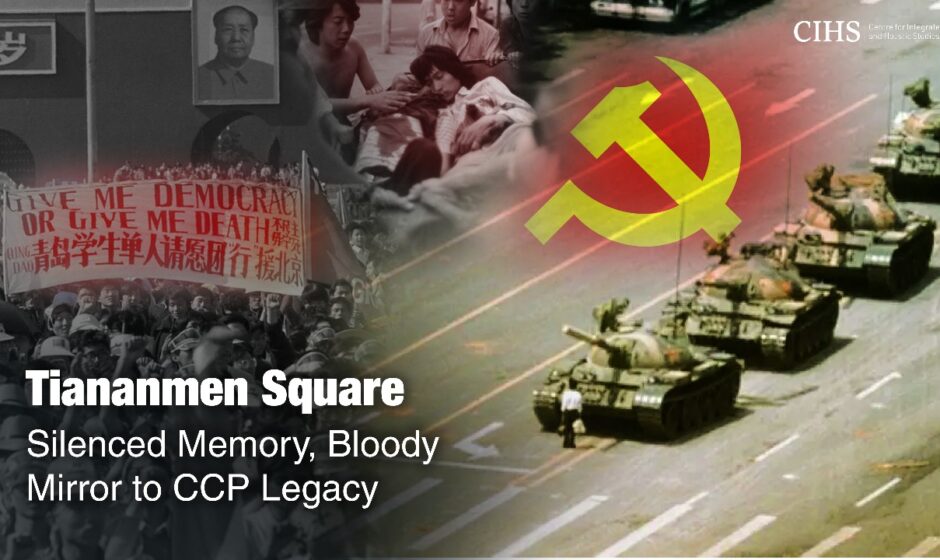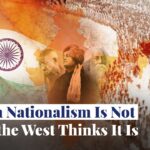History, if buried, becomes a tool of tyranny. Memory, if preserved, becomes a weapon of liberty. The ghosts of Tiananmen still march in silence. It is up to the world to give them voice.
Pummy Pandita
On June 3rd and early morning of June 4th, 1989, Chinese Communist Party (CCP) showed its draconian fangs and massacred the country’s youth and workers at Tiananmen Square.

Thousands of unarmed workers and students protesting for democratic reforms and freedom from corruption were confronted with tanks, bullets and ferocity.
Thirty-six years on, the Chinese dictatorship continues to erase, censor and sanitize that blood-soaked chapter from national psyche. But for the world at large, Tiananmen is still a beacon of defiance and a cautionary tale of enduring authoritarian rule.
Although the death toll is veiled by censorship, estimates vary from hundreds to several thousand. What is undeniable is that CCP directed People’s Liberation Army (PLA) to suppress peaceful protests with iron fists and running the tanks over protestors. The iconic image of “Tank Man”, a solitary protester facing a line of tanks, was not mere momentary bravery. It was condemnation of a ruthless regime that perceived students waving placards as a danger to state security.
Now, Chinese internet censors even suppress digits “64” and “1989.” Victims’ families, Tiananmen Mothers are subjected to surveillance, harassment and house arrests each anniversary. The attempt by state to rewrite history is a testament to its own fear: that memory is revolutionary and truth is subversive.
Tiananmen was not an aberration; it was harbinger of CCP’s authoritarianism that changed but did not disappear. The censorship technologies, surveillance knowhow and suppression tactics that spawned in the wake of 1989 have since metastasized into contemporary surveillance state we witness in Xinjiang, Hong Kong, Tibet and increasingly within mainland China.
The party that ran over students in Beijing constructed virtual concentration camps in Xinjiang in the name of “counter-terrorism.” And, the regime that shook at placards in 1989 now shakes at hashtags, virtual dissent and international scrutiny. Tiananmen was the bloody blueprint. Refinement, not remorse, followed.
The world witnessed Tiananmen with horror in 1989. But it wasn’t long before trade interests and geopolitical convenience swept the outrage away. Within a few years, China was mainstreamed into global economy. In 2001, it was admitted to the WTO. Western firms poured in, drawn by cheap labour and state-forced exploitation, even as dissidents went missing and Nobel Peace laureates like Liu Xiaobo died in detention.
This ideological bankruptcy, where democratic nations get friendly with the totalitarian ones in the interests of immediate gain, has only encouraged Beijing. West’s dependency on Chinese markets has made it an accessory to muffling Tiananmen’s memory.
Why recall Tiananmen today? Because China’s political system, techno-authoritarian one-party rule with economic influence, is being shipped out; Chinese young people are coming off age in a state that not only revises the past but eliminates it and the struggle over narrative sovereignty is a battleground in the greater war for liberty in 21st century.
Remembering Tiananmen is not about nostalgia. It is about marking the line in red between authoritarianism and civilization. It is about remembering that CCP’s “rise” rests upon coffins of protestors, bones of those it muzzled.
The tanks are no longer rolling down Chang’an Avenue, but the infrastructure of fear, censorship and ideological control remains. For a world in which China’s economic influence and digital footprint become increasingly dominant, remembering Tiananmen is not merely historical amnesia—it is geopolitical suicide. It is imperative that governments, civil societies and international institutions not only to remember but act to raise voices that Beijing wants to suppress, to respond to Beijing’s international narrative warfare with unyielding truth and to see to it that those who stood in Tiananmen Square – armed with nothing but ideals and signs – did not die for nothing.
(Author is head of operations at Centre for Integrated and Holistic Studies, a non-partisan think tank based in New Delhi)



